Comeau is a big winger (6-foot-1, 202 lbs.) who is a strong penalty-killer that can chip in offensively. Comeau spent the last three seasons with the Avalanche, where he averaged 11 goals and 19 assists (30 points) per season.
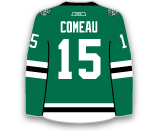
Comeau is a big winger (6-foot-1, 202 lbs.) who is a strong penalty-killer that can chip in offensively. Comeau spent the last three seasons with the Avalanche, where he averaged 11 goals and 19 assists (30 points) per season.

Stastny elected not to re-sign with the Jets, who acquired him from St. Louis at last year’s deadline. Stastny finished the 2018 season with 16 goals and 37 assists (53 points) in 82 games. Stastny will line up as the Golden Knights’ second-line centre behind 2018 breakout star William Karlsson.
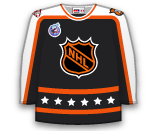
Ryan was a late-bloomer, spending three years in the WHL, four years at the University of Alberta, three years in Austria, one in Sweden and one in the AHL before making it to the NHL. Ryan had 15 goals and 23 assists (38 points) in 80 games with the Hurricanes. Ryan was top-10 in the NHL in face-off percentage last year and can also chip-in on the power-play. The 30-year-old has ties to Flames head coach Bill Peters, who was just let go in Carolina.

van Riemsdyk was originally selected No.2 overall by the Flyers in 2007 and spent the first three years of his career in Philadelphia. van Riemsdyk has been one of the most consistent producers in the NHL in recent years, averaging 31 goals and 28 assists (59 points) per 82 games over the last five seasons. JVR is expected to skate on the Flyers’ second line with Nolan Patrick and Jakub Voracek.

Halak had another tough season with the Islanders in 2018, going 20-26-6 with a 3.19 GAA and .908 SV% in 54 games. A change of scenery should help the 33-year-old netminder, who will serve as Tuukka Rask’s backup in 2019. Halak heads to Boston with a career 2.50 GAA and .916 SV% in 449 NHL games.
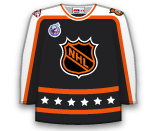
Vanek returns to the Red Wings after spending last year with the Canucks and Blue Jackets. In his first go-around with the Red Wings, Vanek had 38 points (15G / 23A) in 48 games before being traded to the Panthers. He is coming off of a year in which he had 24 goals and 32 assists (56 points) in 80 games. Vanek is a quality middle-6 scoring winger who will likely be dealt again at next year’s deadline.
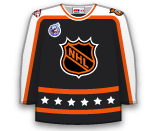
Following a one-year stint with the Avalanche, Bernier signs with the Red Wings, where he will fight with Jimmy Howard for playing time. The 29-year-old had a solid season in Colorado, going 19-13-3 with a 2.85 GAA, .913 SV% and two shutouts in 37 games.
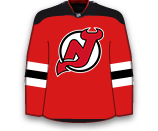
Seeler was a fifth-round pick (No.131 overall) in 2011 and made it to the NHL last season. After three years in the NCAA and a year and a half in the AHL, Seeler picked up four assists in 22 games with the Wild last year. The 25-year-old is expected to be on the Wild’s third pairing to start the 2019 season.

Reaves was picked up from Pittsburgh midseason last year, and picked up two assists in 21 games with Vegas. He became a key member of their fourth line and a fan favourite, which is why he is getting nearly three million per season.

Lack will serve as the Devils’ No.3 goalie behind Cory Schneider and Keith Kinkaid. He spent most of last year in the AHL, where he was 6-7-2 with a 2.90 GAA and .889 SV% in 16 games.
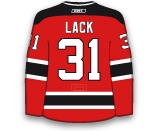
After his three-year contract ended in Detroit, Green decides not to test the free agency market and re-up with the Red Wings. During that three-year stretch, Green ranked 25th among defensemen in goals (29) and 35th in points (104).
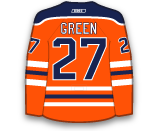
Doughty, who will turn 29 in December, is signed through the 2026-27 season. Doughty has played in all 82 games for four straight seasons, ranking eighth among defensemen in points (201) and tied for 16th in goals (43) over that span. Doughty will become the highest-paid blueliner when his extension kicks in.

Zykov led the AHL with 33 goals and added 21 assists (54 points) in 63 games with the Charlotte Checkers. Zykov will battle for a roster spot in Hurricanes’ training camp this fall. He has eight points (4G / 4A) in 12 career NHL games.
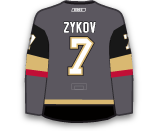
Vatrano split his 2018 season between the Bruins and Panthers. The 23-year-old had eight points (5G / 3A) in 16 games with Florida, finishing the year with 10 points (7G / 3A) in 41 games. Vatrano seemed to have found a nice home in Florida and should be a bottom-6 winger with them to start 2019.

Kempny was acquired from the Blackhawks mid-season in 2018. Kempny had seven points (1G / 6A) in 31 games with Chicago and three points (2G / 1A) in 22 games with Washington—10 points (3G / 7A) in 53 games overall. Kempny is a solid second/third-paring defenseman, who will be with the Capitals through the 2022 season.
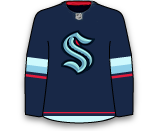
In his first year with the Capitals, Smith-Pelly had 16 points (7G / 9A) in 75 games. The winger had a -4.7 relative Corsi with Washington and will likely be a fourth liner again in 2019.
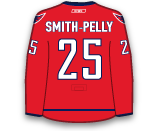
Rau had just one assist in three games with the Wild last season. He spent most of the year in the AHL, where he had 50 points (23G / 27A) in 69 games. Rau will push for a roster spot in training camp but will have a tough time cracking one of the deepest rosters in the NHL.
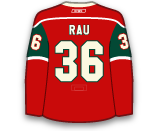
Sheahan was acquired from the Red Wings early in the season, and scored 11 goals with 21 assists (32 points) in 73 games with the Penguins. Sheahan posted a horrible -6.0 relative Corsi with the Penguins, but earned another season with them. He will likely serve as their No.4 centre with Sidney Crosby, Evgeni Malkin and Derick Brassard ahead of him on the depth chart.
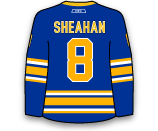
Connauton is coming off of his best season in the NHL, scoring 11 goals with 10 assists (21 points) in 73 games with the Coyotes. Connauton averaged just 15:11 TOI/GM, so expect him to serve as a third pairing defenseman again in 2019.

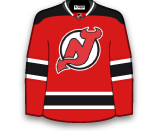
Some of the top NHL free agents available this summer are Mitch Marner, Mikko Rantanen, Aaron Ekblad, Nikolaj Ehlers, John Tavares, Brock Boeser, Brad Marchand and Linus Ullmark.
This offseason will bring a stacked crop of free agents to the market that will shape the landscape of the 2025-26 NHL season. Not only will the final landing spots for each of the top 2025 NHL free agents shake up the framework of the league, but will also have major implications on the upcoming fantasy hockey season. Be sure to stay in the know in regard to the latest free agency updates with our NHL player news.
On July 1st, 2025, at 12 PM EST, the 2025 NHL free agency period officially opens. While some players will have all but signed the dotted line up to this point, nothing can become official until noon on Canada Day.